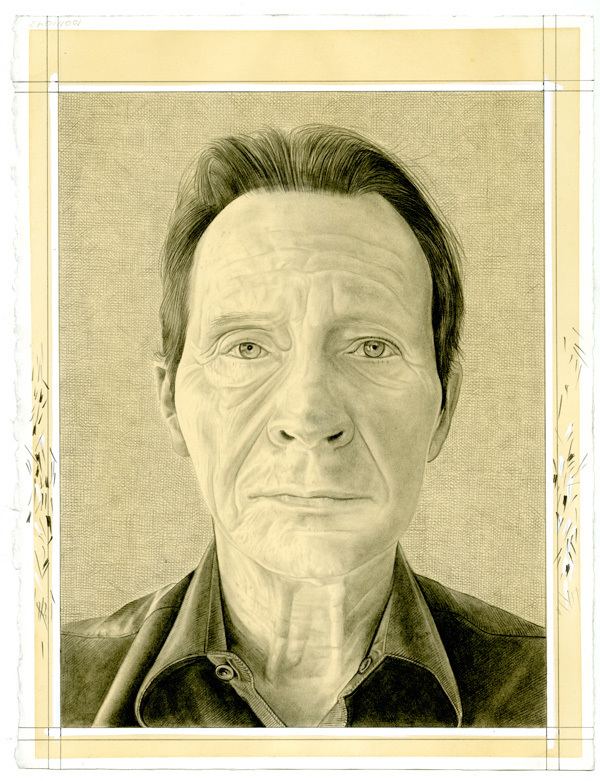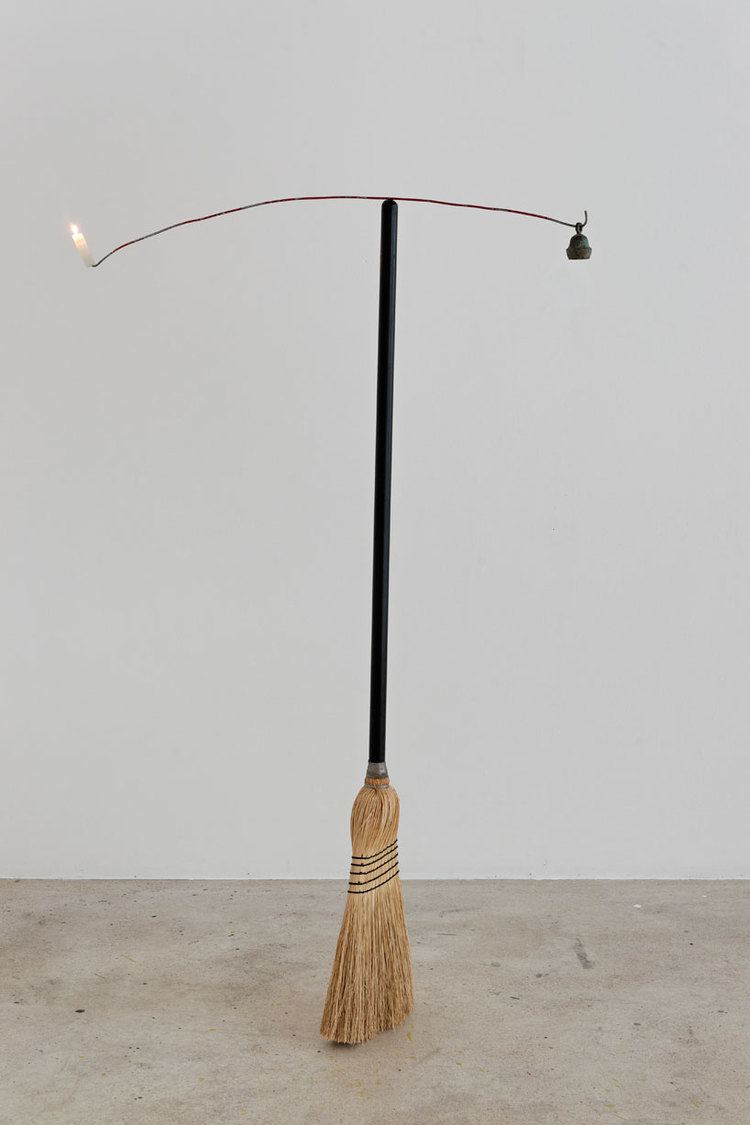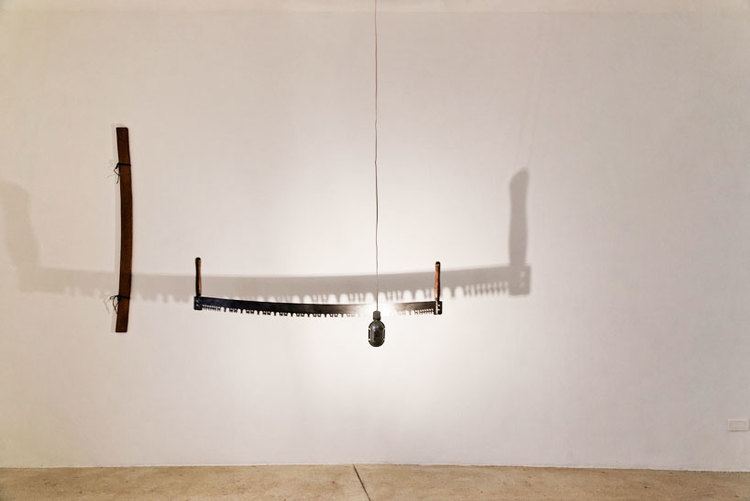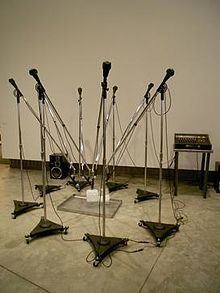Name Paul Kos Role Artist | Movies Ice/Fire | |
 | ||
Awards Guggenheim Fellowship for Creative Arts, US & Canada | ||
Kqed spark paul kos
Paul Kos (American, b. December 23, 1942) is a conceptual artist and one of the founders of the Bay Area Conceptual Art movement in California. Paul Kos (together with his contemporaries Vito Acconci, Howard Fried, and Bruce Nauman) was one of the first artists to incorporate video, sound and interactivity into his sculptural installations.
Contents
- Kqed spark paul kos
- Conceptual Artist Paul Kos Gets His Students Out of the White Cube
- Short biography
- Paul Koss sound bites from the Spark interview
- The Sound of the Ice Melting 19701
- Chartres Bleu 1982 1986 2
- Sand Piece 1971 3
- rEvolution Notes for the Invasion mar mar march 1972 73 4
- Tower of Babel 1989 5
- Pawn 1991 6
- Public collections
- Online articles
- Books
- References

Conceptual Artist Paul Kos Gets His Students Out of the White Cube
Short biography

Paul Kos moved from Wyoming to San Francisco where he received both his B.F.A and M.F.A from the San Francisco Art Institute in 1967, where he later taught in the New Genres department. In the mid-1960s he worked on abstract fiberglass sculptures, but he then turned away from those to more site-specific art. The first major retrospective of his work “Everything Matters” was held at the Berkeley Art Museum and Pacific Film Archive. A second major survey of the artist's work was held at di Rosa in 2016. Today Kos lives and works in San Francisco. He has exhibited on both the West and East coasts and has received several awards, including five National Endowment for the Arts fellowships and the Rockefeller Foundation fellowship. His work can be found in the collections of the Institute of Contemporary Art, Philadelphia, the San Francisco Museum of Modern Art, di Rosa, the Museum of Modern Art (New York), and the Stedelijk Museum in Amsterdam.

Kos holds the Dodd Chair at the University of Georgia, and has received a Eureka Fellowship, a Flintridge, a Guggenheim, a Rockefeller, a Tiffany and six NEA Fellowships. Besides his studio practice, Kos has made large scale public art installations including:Poetry Sculpture Garden with Poet Laureate, Bob Hass, at 199 Fremont, San Francisco and “Every thing matters” for the Bishop Collection at the new UCSF Campus .
Paul Kos’s sound bites from the Spark interview

- "An artist goes in and out of shape ... when you're in shape, ideas are coming faster than you have time to make them."
- "My feeling is, if an artist develops fairly rigorous formalism in their education ... after that, one should be able to move from craft to craft."
- All art should have good craft—that's just an assumption. But good craft is not art. Art is that magic that happens somewhere between the viewer, the object and the artist. The artist initiating it, but the viewer being that receiver of that triangle."
- "In new genres, the craft is thinking on one's feet. And being able to use a material based on a site, maybe the site determines what the material is. It tells you everything."
- "Often I think a conceptual artist, unlike the painter or sculptor begins with a concept. And then finds the material that best suits that concept, that somehow the concept has some indigenous qualities to it that tell the artist what to use."
- "I respect painting probably the most because they are to the arts like philosophy is to the humanities."
- "When I was young I really loved magic tricks. I loved the idea of doing ... a piece could have an element in it which is a surprise."
- "When everything matters, essentially, every detail counts."
- "Work should not necessarily be read like language is -- left to right top to bottom. Instead, the work has its own language system."
- "I'm trying to pare down and pare down -- use less adjectives and less adverbs, trust the verb and some nouns."
The Sound of the Ice Melting (1970)[1]
10 boom microphones plugged into an active sound system recorded the sound of 25 pound blocks of ice melting in a metal pan on the floor.
Chartres Bleu (1982- 1986) [2]
This piece represents a full-scale recreation of a stained-glass stained glass windows in Chartres Cathedral. Twenty seven vertically stalked monitors show glass panels of the famous church over a period of twenty four hours, condensed into twelve minutes. Readability of represented narrative scenes changes, depending on the changes of the light. The work is permanently on view at di Rosa.
Sand Piece (1971) [3]
Two story gallery was transformed in an hourglass. A tone of sand that was placed on the upper floor was sifting through a minute hole to the lower level, in the shape of a perfect cone.
rEvolution: Notes for the Invasion: mar mar march (1972- 73) [4]
Viewer must walk around narrow planks of wood to see a monitor that shows a small figure marching above typewriter keys that spell mar mar march. Interesting correlation between the fiction and the reality and mechanical regularity of little man’s steps and disposition of wooden planks.
Tower of Babel (1989) [5]
Tower of Babel is an installation from 1989. that criticizes divisions between different cultures and advocates international understanding. Tower of Babel is a Vladimir Tatlin–inspired metal ramp with twenty video monitors featuring seventy-six people speaking fifty different languages. Cacophony seems indecipherable, unless a viewer comes closer to individual monitors.This piece is inspired by a Biblical story of the Tower of Babel in which people used to speak only one language before they became too ambitious and tried to build a tower to the heavens. God made them speak different languages so that they could not understand each other.
Pawn (1991) [6]
Image of a red pawn that is made with 25, 000 magnetic chess pieces. These pieces don’t mimic pawn’s symmetry but the illusion of light and shadow in bright red and white. A red pawn presents an obvious metaphor for life under Communism.
